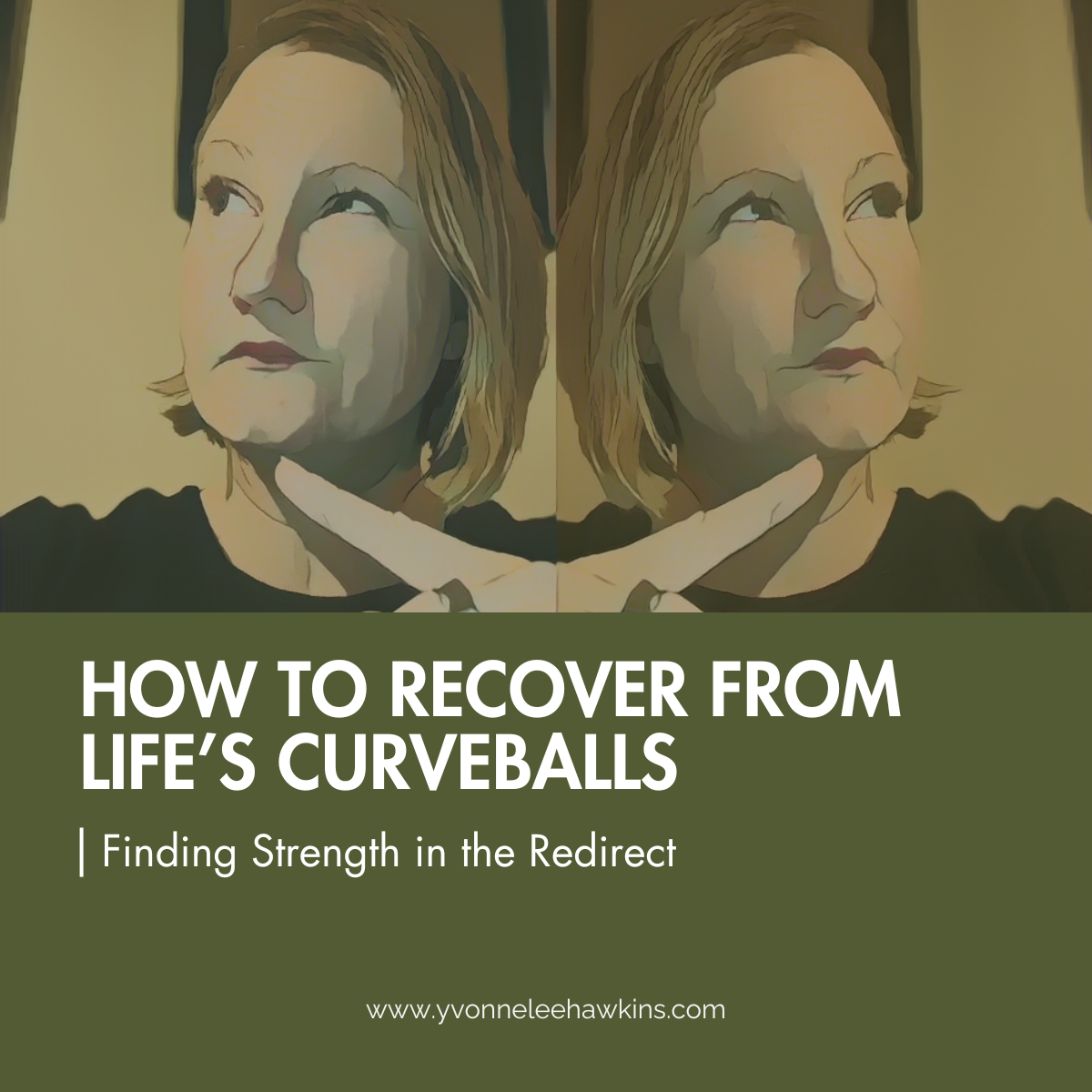Finding Strength in the Redirect
Life rarely goes as planned. One day, you’re cruising along, confident in your career, your health, and your relationships, and then suddenly, a curveball comes flying out of nowhere. A layoff. A surprise PIP (Performance Improvement Plan). A scary health diagnosis. A breakup. A global crisis. Or maybe it’s not one major thing, but a slow addition of straws that break the camel’s back, a moment where you think, “I can’t keep going like this.” These moments shake us, make us question our identity, and often leave us overwhelmed with uncertainty.
The truth? Life will always throw unexpected challenges our way. What matters most is that we recover, and that we get stronger, not weaker in the process. Even when it feels personal, I remember something a mentor of mine shared a long time ago that stuck with me, “rejection is redirection.” Meaning, it’s not an end, it’s simply a sign to change directions.
In this article, we’ll explore how to navigate major life disruptions with resilience and grace, including five practical steps you can take to begin your recovery, starting today.
Common Curveballs—and Why They Hit So Hard
Let’s name a few of the big ones:
- A sudden layoff or job loss: You didn’t see it coming, or maybe you did, but it still knocked the wind out of you. Beyond the financial stress, it’s often the emotional blow that lingers: Was I not good enough? What do I do now?
- Being put on a PIP: A Performance Improvement Plan can feel like a slow-motion firing. Even if it’s positioned as a tool for support, it often triggers shame, fear, and self-doubt.
- A health scare or diagnosis: One test result can make you see your future differently. Your priorities shift, and what used to feel important now takes a back seat to survival, healing, or simply trying to understand what’s next.
- A breakup, divorce, or relationship fracture: Losing a partner, whether by choice or circumstance, can unravel your sense of stability and force a deep reexamination of who you are without them.
- Global or societal disruption: Economic downturns, pandemics, or social unrest create mass uncertainty, which magnifies personal struggles.
These events often trigger similar emotions: loss of control, grief, fear, and a scramble to “fix it” fast. But real healing and recovery take time, patience, and intentional action.
5 Practical Steps to Start the Road to Recovery
- Feel Your Feelings (Don’t Skip This Part)
It may be tempting to brush off the pain or jump straight into action. But emotional suppression doesn’t work, it just delays the healing process. Let yourself cry, rage, journal, scream into a pillow if needed. Emotions are data, not directives. Honor what you’re feeling without judging yourself for it.
Pro Tip: Set a timer. Give yourself 20–30 minutes a day to truly feel and process. Then move on to something nurturing. A good mantra to have is “better out than in.”
- Reconnect with Your Core Values
When life shakes you up, it can also be a wake-up call. Ask yourself: What really matters to me? This is especially helpful after a career disruption like a PIP or layoff. Maybe the role was never aligned with your deeper purpose. Maybe it’s time to pivot, not panic.
Tool: Try writing a “Values List”—what principles guide the kind of life you want to live? Then ask if your past path was honoring them.
- Create Micro-Goals That Restore Momentum
You don’t have to rebuild your entire life in a week. Start with small, actionable steps. If you’re job-hunting, it could be updating your resume or reaching out to a former colleague. If your health takes a hit, focus on hydration, gentle movement, or one good meal a day.
Remember: Momentum builds confidence. Small wins compound.
- Seek Support (You Don’t Have to Go It Alone)
You might feel like isolating, but connection is key to recovery. Whether it’s a coach, therapist, mentor, or a trusted friend—let someone in. Recovery accelerates when you have perspective and encouragement.
If you were put on a PIP, talking to a mentor or a former leader who knows your strengths can help recalibrate your self-image.
- Reinvent, Don’t Just Return
Sometimes we long for “getting back to normal.” But maybe normal wasn’t serving you. Use this disruption as a pivot point. What do you want more of in your life? Less of? What might this curveball be freeing you to do?
Example: One client I worked with hated the high-stress job she was in despite being on a promotion path. After a few weeks of soul-searching, she decided to redirect her career to something she used to love but gave up in order to progress in corporate. Today, she earns more and feels more fulfilled.
Key Truths to Remember During Transitions
- This season won’t last forever: It might feel like you’ll never regain stability or clarity—but you will. Change is hard, but it’s also temporary.
- Your identity is not your job, title, or current circumstance: You are whole and worthy even when your external world feels messy.
- You’ve survived hard things before: Think back. You’ve navigated storms before. You’ve grown through pain. You have evidence of your resilience.
- You don’t have to “know the plan” to take the next right step: Clarity often comes through action, not before it.
The Bottom Line: You’re Not Alone, and You’re Not Broken
When life throws you a curveball, it doesn’t mean you’ve failed—it means you’re human. We’re not meant to live on autopilot. Sometimes life disrupts us to invite us into deeper alignment.
Recovery doesn’t mean “getting back to where you were.” It means growing into who you were always meant to become.
If you’re navigating one of these transitions and want help finding your next steps, my coaching services are designed to walk alongside you. Whether you’re rebuilding your career, your energy, or your sense of purpose, you don’t have to do it alone.
You’ve got this. Let the curveball be the turning point.
***
Did this topic add value to you? Please like and subscribe if you want more topics like this, or DM me. I always love suggestions and feedback!
And if you are too burned out and overwhelmed to even begin to use any of these strategies it might be time to get some help. Find a coach, therapist, or doctor who can help you reverse out of the physical, mental, and emotional symptoms of burnout so you can get back to living the life you love.
Remember, Self-care isn’t selfish…it’s required!
Yvonne Lee-Hawkins, IPHM, is a holistic Leadership and Wellness coach, stress strategist, and writer, who spent 20 years in corporate and leadership functions while also being a wife and mom to three amazing kids. You can find out more on her website, or follow her on Instagram, LinkedIn, or Medium. If you want some help beating burnout and all that comes with it, schedule a call here.
Lastly, sharing is caring. If you know someone who would benefit from this article, please forward it to them!

